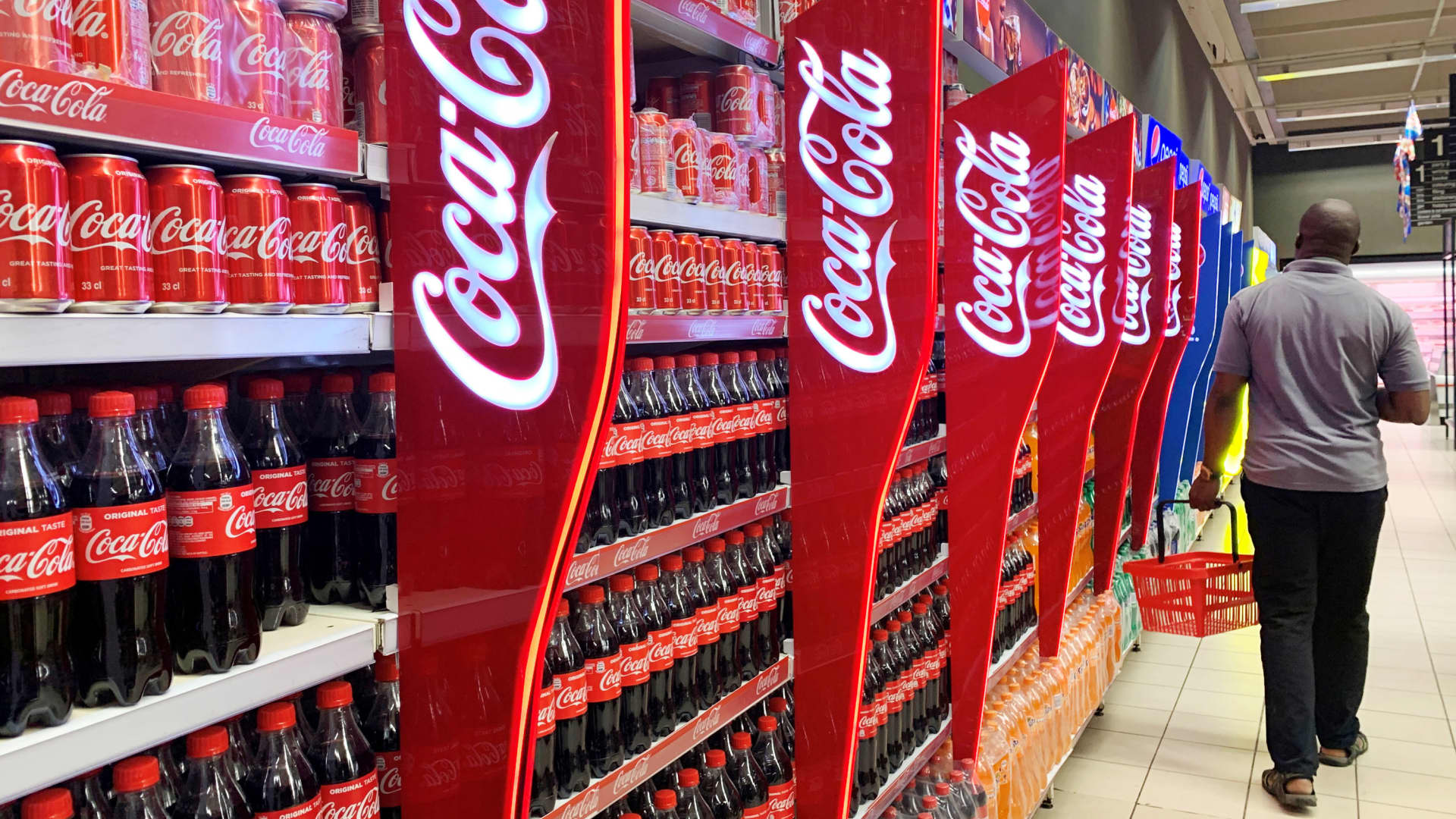A shopper walks past a Nike store, as global markets brace for a hit to trade and growth caused by U.S. President Donald Trump's decision to impose import tariffs on dozens of countries, in the King of Prussia Mall in King of Prussia, Pennsylvania, U.S., April 3, 2025.
Rachel Wisniewski | Reuters
Nike on Thursday said it expects sales and profit declines to moderate ahead, after the sneaker giant took its biggest financial hit yet from its turnaround plan during its fiscal fourth quarter.
While Wall Street's expectations were low coming into the report, Nike beat estimates on the top and bottom lines.
Here's how the company did for the three-month period ended May 31, compared with estimates from analysts polled by LSEG:
Earnings per share: 14 cents per share vs. 13 cents estimatedRevenue: $11.10 billion vs. $10.72 billion estimatedThe company's reported net income for the quarter was $211 million, or 14 cents per share, compared with $1.5 billion, or 99 cents per share, a year earlier.
Sales dropped to $11.10 billion, down about 12% from $12.61 billion a year earlier.
Last quarter, Nike warned that its fiscal fourth quarter would be the low point of its turnaround but in the months since, conditions worsened, leaving investors wondering if more pain was still to come.
In a press release, Nike finance chief Matt Friend confirmed that the fiscal fourth quarter will see the "largest financial impact" from its turnaround and headwinds are expected to moderate moving forward.
"I am confident in our ability to navigate through this current dynamic and uncertain environment by focusing on what we can control," said Friend.
Nike shares dropped more than 2% in extended trading Thursday.
During the quarter, Nike's profits fell by a staggering 86% as it worked to clear out stale inventory, woo back wholesale partners and reset its digital business. The largest hit to margins came from Nike's use of discounts and clearance channels to offload inventory, coupled with its shift back to wholesale, which is a less profitable channel than selling directly on its website and stores.
The company has warned the strategy would lead to lower near-term profits, but would leave the business in a healthier position in the long term.
During the quarter, Nike Direct revenue, representing stores, wholesale and its website, fell 14%, led by a 26% drop in digital sales and a 9% decline in wholesale.
Nike stores, however, were a bright spot. During the quarter, sales at Nike stores rose 2%.
Foot traffic data at Nike stores has been declining since October, but those figures also indicate that conditions could be improving, according to Placer.ai, an analytics firm that uses anonymized data from mobile devices to estimate overall visits to locations.
Monthly visits to Nike stores dropped 10.2% in April compared to the previous year, but that decline narrowed to 3.2% in May, according to Placer.ai.
Revenue fell in all regions during the quarter, but came in a bit better than expected in North America, Nike's largest market. Sales fell 11% to $4.70 billion in North America, better than the $4.42 billion analysts had expected, according to StreetAccount.
Still, China revenue came in at $1.48 billion, just below the $1.50 billion analysts had expected, according to StreetAccount.
Since Nike last reported earnings, tariffs on goods imported from China have increased to 30%. The company increased prices across its assortment to offset those costs, CNBC previously reported.
The first product launch from its highly anticipated partnership with Kim Kardashian's intimates line Skims was also supposed to go live during the quarter, but now that's been delayed to later this year, CNBC previously reported.
When Nike hosts its conference call at 5 p.m. ET, investors will be most interested in Nike's guidance. But Wall Street will also be looking out for more details on the state of its turnaround, insight into its product launch pipeline and whether it can continue to cut expenses.
Plans for Nike's partnership with Skims will also be a key point of interest. Beyond clearing out stale inventory and releasing more innovative styles, Nike is working to win over more female shoppers, who are estimated to represent about 40% of its business.
This gender gap is not ideal for discretionary retailers because women tend to spend more on clothes than men. Nike has lost market share to athletic apparel competitors like Lululemon and Alo Yoga, which cater to a similar customer but are more geared toward women.
Sneakers are still the most important part of Nike's business, but apparel is a growth area for the company, representing about 28% of Nike brand revenue in fiscal 2024.
This is breaking news. Please check back for updates.

 3 weeks ago
3 weeks ago















